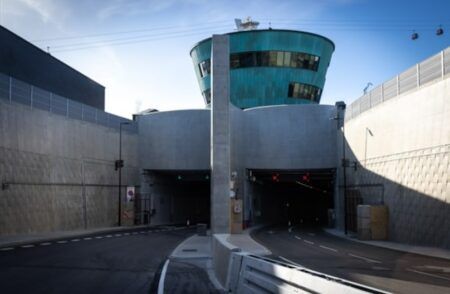Congestion along North Carolina’s freeways is growing, especially during peak travel times, such as morning and evening commute times. While traffic volumes increase, the amount of available funding and physical space limit the NC Department of Transportation’s ability to widen existing highways and build new ones. NCDOT has now turned to a technology that is new to the state, but widely used elsewhere: ramp meters.
NCDOT intends to optimize traffic flow on freeways using on-ramp signals or ramp meters, which are a cost-effective and proven way to reduce travel times on highways and make them more reliable. The agency will be trialing the system to help improve traffic flow for drivers at four pilot sites along a stretch of Interstate 540 in north Raleigh. Ramp meters are stop-and-go lights on freeway entrance ramps that work in a similar way to traffic signals: when the signals are activated, vehicles on the ramp must stop when the light is red and wait a few seconds until it turns green before proceeding on to the freeway. This allows only one or two vehicles to merge at a time, which reduces competition for space when merging onto the I-540.
The first on-ramp signals in the North Carolina pilot project will be installed along westbound I-540 at four ramps in north Raleigh, with the areas selected as pilot sites based on in-depth studies completed in 2013. On-ramp signals are generally used during peak travel times but can be activated at any time in response to unusual circumstances affecting traffic flow, such as special events, crashes or construction. The department expects to award a contract for the project this autumn and for the signals to be operational by spring 2017. NCDOT is also evaluating on-ramp signals for Charlotte-area interstates.
Although North Carolina uses the term on-ramp signal to describe the technology, federal guidelines require that advanced-warning signs use the term ramp meter. The ramp meters are treated and enforced just like normal traffic signals, with violators being ticketed by law enforcement officers. The signals are positioned on the ramp so there is enough distance for a vehicle to accelerate to a safe speed before merging into freeway traffic. The on-ramp signals respond to real-time traffic conditions to balance traffic flow. If vehicles start to back up on the ramp, a sensor will activate the signal to adjust and quickly clear the backup. Traffic cameras will also feed live images to NCDOT’s traffic operations center, allowing engineers to manually adjust the signals, if necessary.
“While this is the first time we are using this technology in North Carolina, on-ramp signals are used effectively in several other states and extensively throughout Europe,” said Kevin Lacy, NCDOT state traffic engineer.
“The signal spaces out the number of cars trying to merge on the freeway at once, which makes merging smoother. That translates to better traffic flow and more reliable times on the freeway, as well as improved safety and fewer crashes.”




